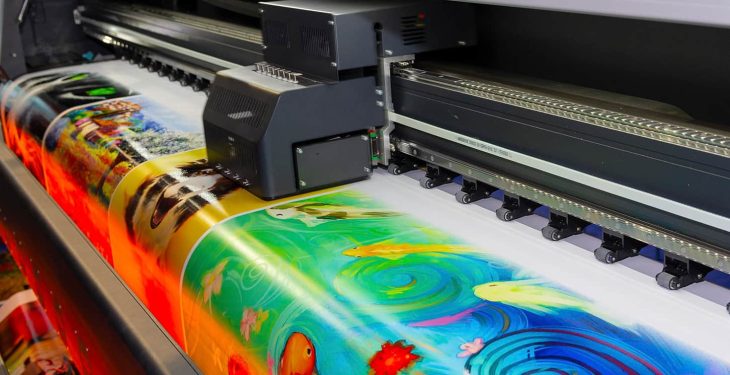The Comprehensive Guide to Poster Printing

Poster printing has long been a popular and effective method for communication, advertising, and artistic expression. Whether it’s for promoting events, marketing products, or creating artwork, posters have the ability to capture attention and convey messages quickly and effectively. This guide delves into the history, types, techniques, and modern applications of poster printing, providing a thorough understanding of this versatile medium.
History of Poster Printing
The history of poster printing dates back to the invention of the printing press by Johannes Gutenberg in the 15th century. However, it wasn’t until the late 19th century, with the development of color lithography, that posters truly came into their own. Color lithography allowed for vibrant, multi-colored prints, leading to a boom in poster art. Artists like Henri de Toulouse-Lautrec and Alphonse Mucha created iconic posters that are still celebrated today. These posters not only advertised products and events but also became a significant part of popular culture.
Types of Posters
Posters come in various forms, each serving a distinct purpose. Here are some common types:
Advertising Posters: Designed to promote products, services, events, or brands, these posters are strategically placed in high-traffic areas to attract maximum attention. They often feature bold graphics and persuasive text.
Movie Posters: These posters are used to promote films, often featuring striking imagery and key information about the movie. They are a crucial part of a film’s marketing campaign.
Event Posters: Used to advertise concerts, festivals, and other events, these posters are designed to inform and entice potential attendees. They often include details about the event, such as date, time, location, and featured performers or activities.
Educational Posters: Commonly found in classrooms and offices, these posters are used to convey information, such as maps, charts, or motivational quotes. They serve as visual aids to support learning and information retention.
Political Posters: These posters have been used for centuries to promote political candidates, movements, or causes. They are designed to influence public opinion and rally support.
Art Posters: These are created purely for artistic expression, often featuring reproductions of famous artworks or original designs by contemporary artists.
Techniques of Poster Printing
The process of poster printing has evolved significantly over the years, with various techniques available depending on the desired outcome and budget. Here are some of the most common methods:
Offset Printing: This traditional method is ideal for large runs of posters. It involves transferring ink from a plate to a rubber sheet, which then rolls the ink onto the paper. Offset printing provides high-quality results with accurate color reproduction.
Digital Printing: This modern method is suitable for small to medium print runs. Digital printing involves transferring a digital image directly onto paper using laser or inkjet printers. It offers quick turnaround times and is cost-effective for shorter runs.
Screen Printing: This technique is often used for limited edition posters and involves creating a stencil (or screen) and using it to apply layers of ink onto the paper. Screen printing allows for vibrant colors and unique textures.
Letterpress Printing: This traditional technique involves pressing inked plates onto paper, creating a tactile, embossed effect. Letterpress printing is often used for high-end, artistic posters.
Giclée Printing: This is a type of digital printing that uses high-quality inkjet printers to produce fine art prints. Giclée prints are known for their longevity and superior color accuracy, making them ideal for art posters.
Modern Applications of Poster Printing
In today’s digital age, posters remain a relevant and powerful medium. Their applications have expanded beyond traditional uses, finding new life in various industries and settings.
Marketing and Advertising: Despite the rise of digital marketing, posters continue to be an effective tool for promoting products, services, and events. They are used in public spaces, such as bus stops, subways, and billboards, as well as in-store displays.
Interior Decoration: Posters are a popular choice for home and office decor. They can reflect personal tastes, interests, and styles, making them a versatile and affordable option for decorating spaces.
Public Awareness Campaigns: Posters are used by governments, non-profits, and organizations to raise awareness about social, environmental, and health issues. They can convey important messages quickly and effectively to a broad audience.
Educational Tools: Posters continue to be valuable educational tools in classrooms and workplaces. They provide visual support for learning and can help reinforce key concepts and information.
Commemorative and Collectible Posters: Limited edition and commemorative posters are popular among collectors. They often feature special events, anniversaries, or artistic collaborations, making them sought-after items.
Conclusion
Poster printing is a dynamic and versatile medium that has stood the test of time. From its historical roots to its modern applications, posters continue to play a vital role in communication, advertising, and art. Whether you’re a marketer looking to promote an event, an artist seeking to share your work, or an educator aiming to inspire, poster printing offers endless possibilities. By understanding the different types, techniques, and applications, you can harness the power of posters to effectively convey your message and captivate your audience.



